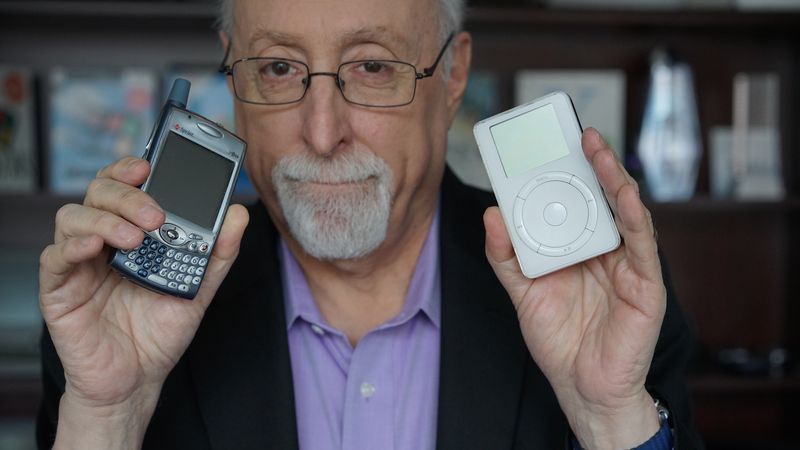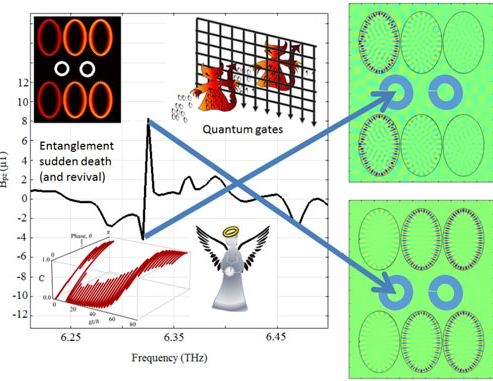“In case you missed it, this week on the Recode Decode podcast, host and Recode co-founder Kara Swisher interviewed our other co-founder, Walt Mossberg, about the past and future of tech and media.”


“In case you missed it, this week on the Recode Decode podcast, host and Recode co-founder Kara Swisher interviewed our other co-founder, Walt Mossberg, about the past and future of tech and media.”

An international team of scientists has created molecular motors that can communicate and synchronize their movements.
The team, led by physicist Saw-Wai Hla of Ohio University, published an Advanced Online Publication today in the journal Nature Nanotechnology demonstrating that scientists can control the coordinated motions of tiny machines at the nanoscale. The research has implications for the future development of technologies that can be used in computers, photonics and electronics as well as novel nanoscale devices.
READ MORE ON OHIO UNIVERSITY | NEWS

Chinese technology giant Huawei is preparing for a world where people live forever, dead relatives linger on in computers and robots try to kill humans.
Huawei is best known as one of the world’s largest producers of broadband network equipment and smartphones. But Kevin Ho, president of its handset product line, told the CES Asia conference in Shanghai on Wednesday the company used science fiction movies like “The Matrix” to envision future trends and new business ideas.
“Hunger, poverty, disease or even death may not be a problem by 2035, or 25 years from now,” he said. “In the future you may be able to purchase computing capacity to serve as a surrogate, to pass the baton from the physical world to the digital world.”
I reported on this finding which the National Labs in Oak Ridge TN published yesterday. This is MIT’s own report on the research and discovery of new material called bismuth selenide (Bi2Se3) with an ultrathin layer of a magnetic material, europium sulfide (EuS). I know that is a mouth full. However, the end result will be that it could lead to a new generation of electronics, spintronics, or quantum computing devices. Definitely a big move forward in bridging QC into all things that use daily.
A new and unexpected magnetic effect has taken researchers by surprise, and could open up a new pathway to advanced electronic devices and even robust quantum computer architecture.
The finding is based on a family of materials called topological insulators (TIs) that has drawn much interest in recent years. The novel electronic properties of TIs might ultimately lead to new generations of electronic, spintronic, or quantum computing devices. The materials behave like ordinary insulators throughout their interiors, blocking electrons from flowing, but their outermost surfaces are nearly perfect conductors, allowing electrons to move freely. The confinement of electrons to this vanishingly thin surface makes then behave in unique ways.
But harnessing the materials’ promise still faces numerous obstacles, one of which is to find a way of combining a TI with a material that has controllable magnetic properties. Now, researchers at MIT and elsewhere say they have found a way to overcome that hurdle.
Great move to my friends at D-Wave! Nice.
BUDAPEST, HUNGARY—(Marketwired — May 10, 2016) — D-Wave Systems Inc., the world’s first quantum computing company, 1QB Information Technologies Inc. (1QBit), a quantum software firm, and financial industry experts today announced the launch of Quantum for Quants (quantumforquants.org), an online community designed specifically for quantitative analysts and other experts focused on complex problems in finance. Launched at the Global Derivatives Trading & Risk Management conference in Budapest, the online community will allow quantitative finance and quantum computing professionals to share ideas and insights regarding quantum technology and to explore its application to the finance industry. Through this community, finance industry experts will also be granted access to quantum computing software tools, simulators, and other resources and expertise to explore the best ways to tackle the most difficult computational problems in finance using entirely new techniques.
“Quantum computers enable us to use the laws of physics to solve intractable mathematical problems,” said Marcos de López de Prado, Senior Managing Director at Guggenheim Partners and a Research Fellow at Lawrence Berkeley National Laboratory’s Computational Research Division. “This is the beginning of a new era, and it will change the job of the mathematician and computer scientist in the years to come.”
Experts in finance, mathematics, computer science and physics have agreed to participate as editors and content contributors of the community, including:

Subscribe! Receive a convenient email notification whenever a new Nanowerk Nanotechnology Spotlight posts.
Become a Spotlight guest author! Have you just published a scientific paper or have other exciting developments to share with the nanotechnology community? Here is how to publish on nanowerk.com.

I wonder if this would qualify as a turing test.
Lalith Polepeddi, a (human) teaching assistant and researcher on the Jill Watson project at the Georgia Institute of Technology.
Photo:
Lalith Polepeddi.
“I have been accused of being a computer,” says TA Lalith Polepeddi, a computer-science master’s student who was needled for responding to messages with lightning speed. “I don’t take it personally.”
Student Barric Reed, an analytics consultant at Accenture, ACN −0.07 % is embarrassed he didn’t pick up on the trick—for good reason.

Great article about a mad-scientist whose vision caused the world to look cross-eyed. Many of us have been there before some time in our lives.
In 1981, Richard Feynman urged the world to build a quantum computer. In his own words.
“Nature isn’t classical, dammit, and if you want to make a simulation of nature, you’d better make it quantum mechanical, and by golly it’s a wonderful problem, because it doesn’t look so easy.”


I personally can confirm that QC is not being worked on and advance by just a couple groups such as D-Wave and IBM. The questions/bumps in the road that we will all face is threefold:
1) how do we standardize the QC? right now (like most innovation) is done in siloes and limited cross-collaboration across government, labs & universities, and commercial companies. 2) governance and compliance; how will these need to change across multiple areas 3) id & mitigate all impacts instead of after deployment (don’t be reactive) because we will not have that luxury due to hackers.
There is a temptation to lump quantum computing in with technologies such as fusion power in the sense that both have been proposed for decades with the promise of tremendous leaps in performance.
Whilst fusion power continues to frustrate, there are signs of real progress being made in quantum computing. There is barely a tech giant in the world that doesn’t have dedicated teams working on the topic, and these teams are beginning to bring quantum computing out of the lab and into the real world.
At the forefront of this is IBM, who recently announced that they would connect up a quantum computer to the web and allow us to play with it. The project involves a 5 qubit machine, with a qubit allowing it to operate in both ‘0 and 1’ states at the same time, thus increasing its potential computational power enormously. A one qubit machine has roughly 16 possible states, but once you get over 300, you begin to exceed the number of atoms in the universe.